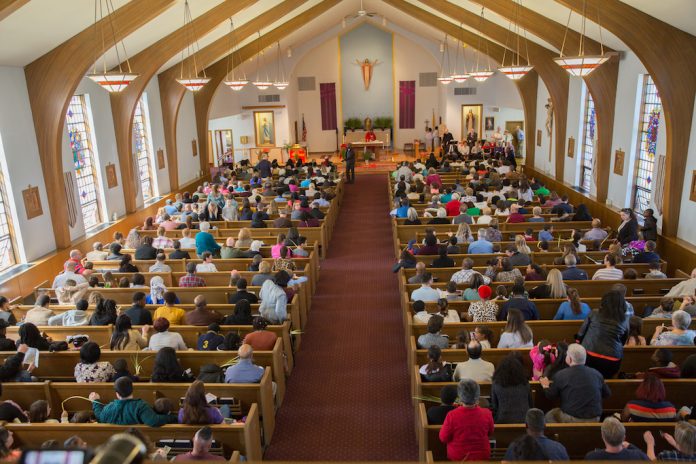
BY JOE PAPROCKI
Third in a series on ways to instill a robust Catholic identity in those we teach
Some years ago Verizon had a series of TV commercials emphasizing the theme of “you’ve got the network.” In each ad they showed a Verizon user in the foreground with an army of people backing him or her up. I’ve often referred to this image to describe our Catholic understanding of the communion of saints—our “network!” We Catholics have a unique understanding of community. We recognize a bond so strong that even death does not separate us from one another!
Perhaps one of the most profound gestures of the Catholic understanding of community is the way we share the precious Blood of Jesus Christ at Mass. We do not each receive our own individual cups to drink from … we drink from the same cup. This is something we do not do anywhere else unless we are sharing a meal with someone very close to us, such as a spouse, sibling, or child. To drink from the same cup is a gesture of intimacy—an expression of deep and profound connectedness.
As members of the Catholic Church, we are not just a loose association of like-minded people. Through baptism, we have been grafted onto the vine and have become members of the Body of Christ—a living “organism.” This profound sense of community is reinforced and expressed in the ways we pray, worship, speak, think, and act.
Community is built on trust and supportive relationships. As a catechist, do everything within your power to create an atmosphere and experiences that are not just fun, but truly build relationships.
How can we help to instill this profound sense of community in
our faith formation? Let me suggest some very practical ways:
COMMUNAL PRAYER
Catholic prayer takes many forms, but one form that is central to our identity is liturgical prayer—a more formal way of praying in that parts and roles are assigned. In addition to less formal methods of praying, be sure to engage your participants in experiences of liturgical prayer that invite them to sing together, chant together, recite psalms together (or antiphonally: side A, side B), process together, and so on. Liturgy is literally the “work of the people,” and young people can begin to learn that Catholics pray not only as individuals, but as a community. Even teaching traditional prayers is a way of building community.
THE COMMUNION OF SAINTS
At every opportunity, invite young people to recall and pray for loved ones who have passed away and remind them that, as members of the communion of saints, we still share an intimate and living relationship with them. It is very comforting for children to know that someone they have lost is not just “gone,” but still with them in a very real way. Invite children to bring in pictures of loved ones who have passed on and create a “communion of saints” poster for your learning space.
SOLIDARITY
Emphasize the Catholic social teaching of solidarity that unites all people, whether they are rich or poor, weak or strong. Because God is our Father, we are all brothers and sisters with the responsibility to care for one another. This spirit of solidarity helps to create a society that recognizes that we live in an interdependent world. Involve your young people in projects that connect them with people, not only in their own community, but around the world.
STEWARDSHIP
Introduce your children to the concept of stewardship: the sharing of time, talent, and treasure with the larger community. Stewardship recognizes that everything we have comes from God and is meant to be shared. Children may not have much to share by way of monetary treasure, but they are never too young to be invited to share of their time and talent. You can teach them to share their “treasure” by inviting them to donate food, clothing, or other articles with the help of their parents.
Community is built on trust and supportive relationships. As a catechist, do everything within your power to create an atmosphere and experiences that are not just fun, but truly build relationships. We do not come to Jesus alone. We come as members of his body, the Church.
Joe Paprocki, DMin, is the national consultant for faith formation for Loyola Press. Find his new book, A Church on the Move: 52 Ways to Get Mission and Mercy in Motion, at Loyola Press. Joe blogs at CatechistsJourney.com.




